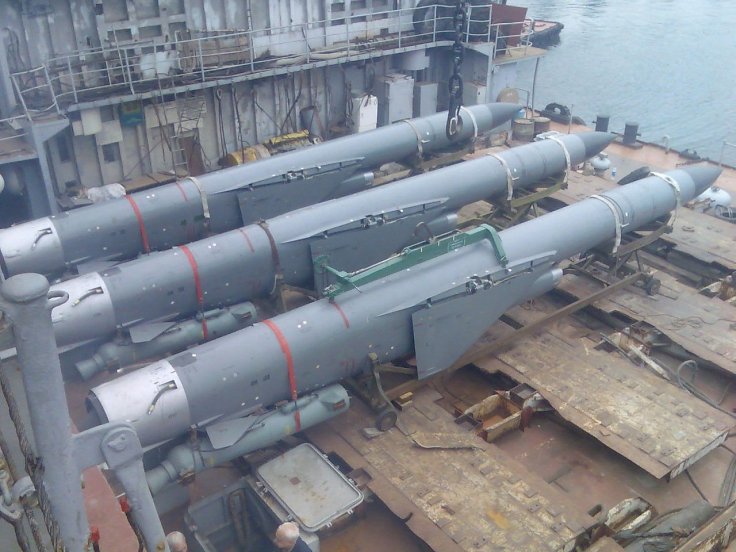Fears are now emerging that Russia's warship Moskva, which sunk in the Black Sea after the Ukrainian airstrike, was carrying nuclear weapons. The vessel was equipped with anti-ship cruise missiles P-1000 Vulkan, which are capable of carrying nuclear warheads.
Experts are calling for a global probe to find out whether the Moskva was carrying nuclear weapons. For Russia, the sinking of Moskva is the largest naval asset to be sunk since World War II.

It is being speculated that there could be two nuclear warheads for cruise missiles onboard the Moskva.
"Perhaps for many, this is new information, but it is true" - the warship is "a carrier of nuclear weapons," said Black Sea News editor-in-chief Andriy Klymenko.
Meanwhile, Ukraine's digital newspaper Defence Express also warned of the nuclear warhead threat from the sunken Moskva. The outlet revealed that there is a real possibility that the affected flagship of the Russian Black Sea Fleet could have had nuclear munitions on board.
The presence of Vulkan missiles at the Moskva warship suggests that the vessel can have additional nuclear weapons also.

Vulkan missile system is a comprehensive anti-ship weapon and it has advanced targeting technology. The missile is capable of flying at Mach 2.
The P-1000 Vulkan is launched in a salvo, where one missile acts as a scout to discriminate targets and can prioritize the largest ship in a fleet. The scout seeker missile flies at an altitude between 5000-7000m to identify targets, while the other three maintain mid-level altitude, according to Missile Defence Advocacy.
If nukes were on the vessel, the loss of warheads could spark a 'Broken Arrow' incident - American military slang for potentially lethal accidents involving nuclear weapons.
Experts are calling on Black Sea nations like Turkey, Romania, Georgia, and Bulgaria to conduct a probe over the matter.
The biggest question is emerging where were the warheads when the ammunition exploded on the ship.
Nuke Missiles
The vessel is believed to have carried 16 R-1000 Vulkan missiles, which can be armed with nuclear warheads with a yield of up to 350 kilotons. But it is not yet clear if nuclear warheads are always present at the installation.
However, it is not clear whether nuclear warheads are always present at the installation, or whether they are placed there only by special order.
Other Missiles
The vessel could also carry other nuclear weapons as missiles for the Fort system, which is a ship-based analog of the S-300. Several of them were regularly on board 64 missiles of this system during the Soviet times.
In addition, the cruiser can carry other nuclear weapons – missiles for the Fort system, which is a ship-based analog of the S-300. During Soviet times, several of them were regularly on board 64 missiles of this system.
Could Nuke Missiles Onboard Moskva Explode After Strikes?
Experts have pointed out that there is no risk of a possible explosion of these missiles in the event of a sinking of the cruiser.
There are currently about 10 reactors, about 10 torpedoes, and about 20 ballistic missiles at the bottom of the seas and oceans, most of which ended up there as a result of accidents on Soviet ships that took place from the 1960s to the 1980s, according to Defence Express.









